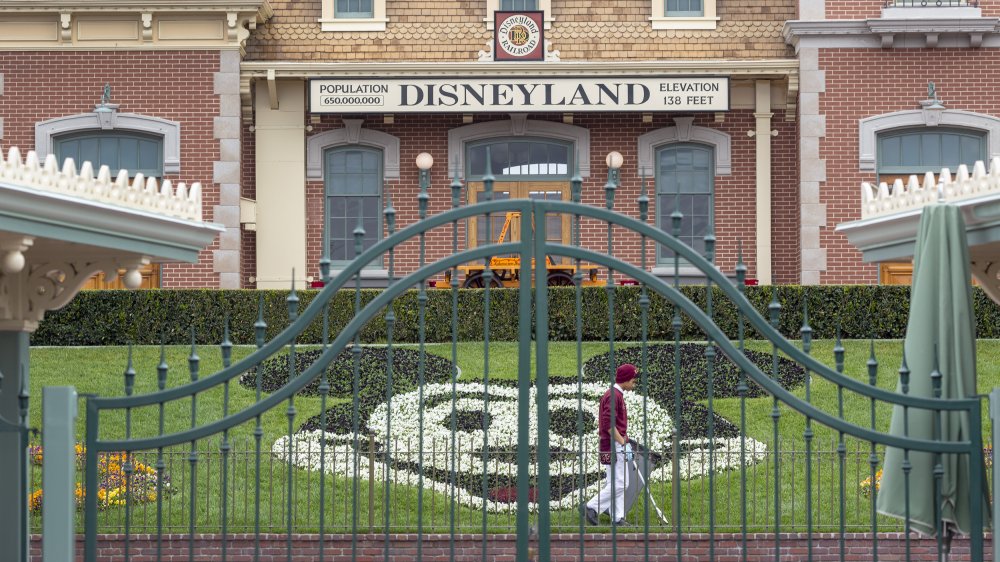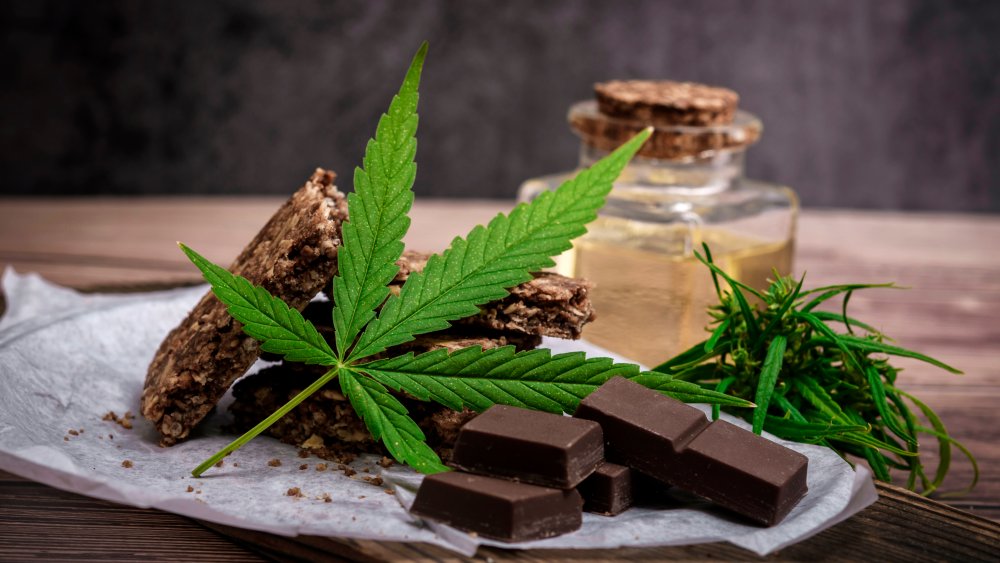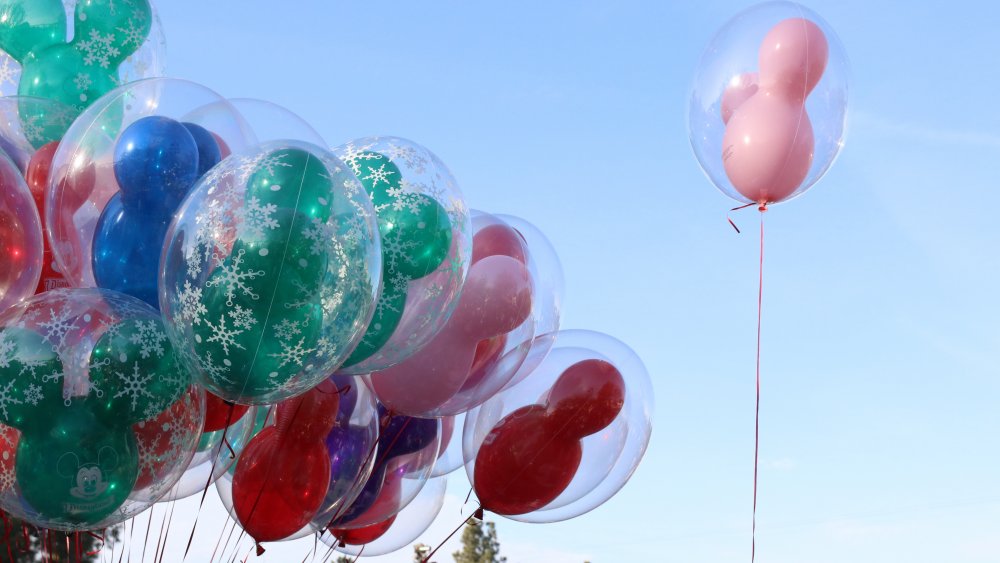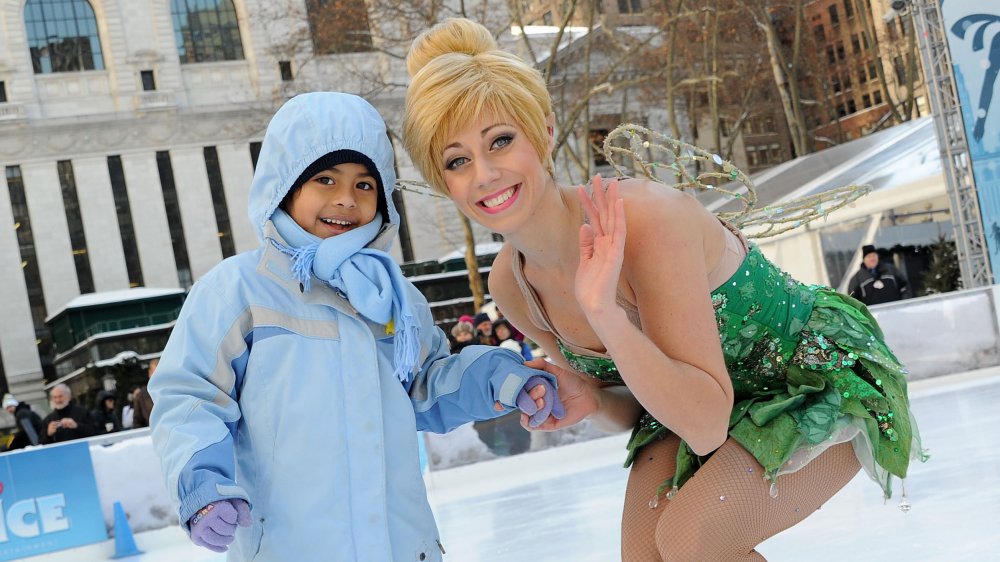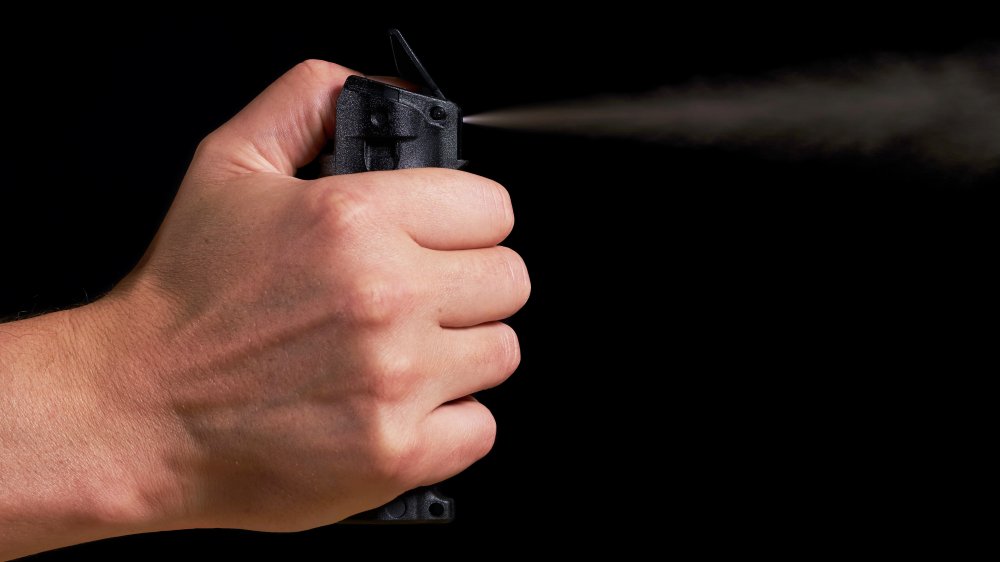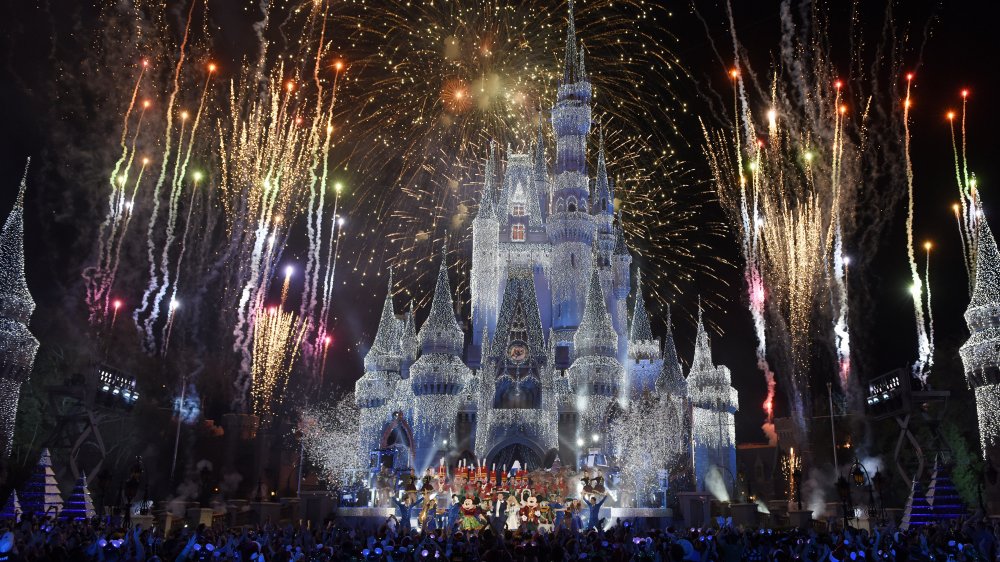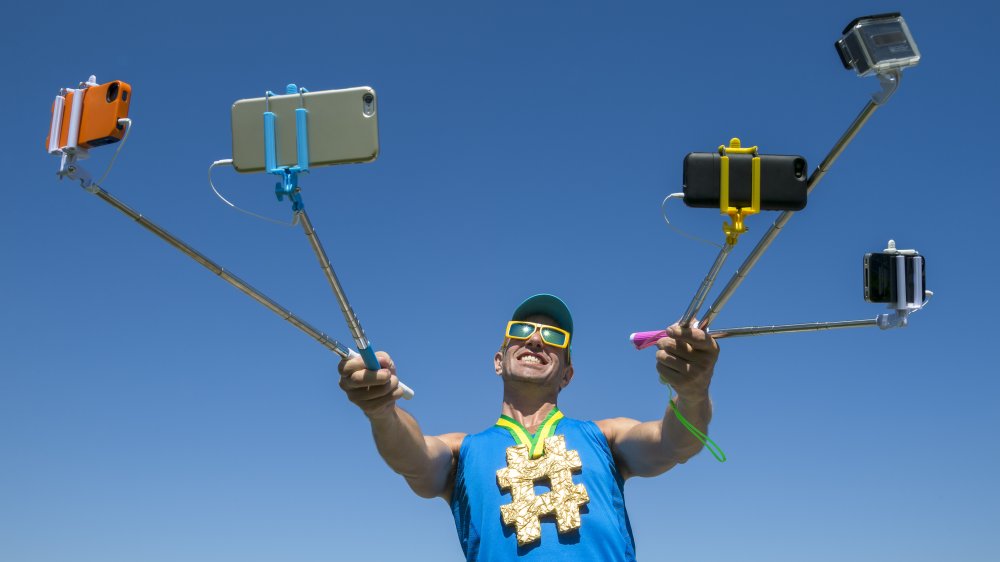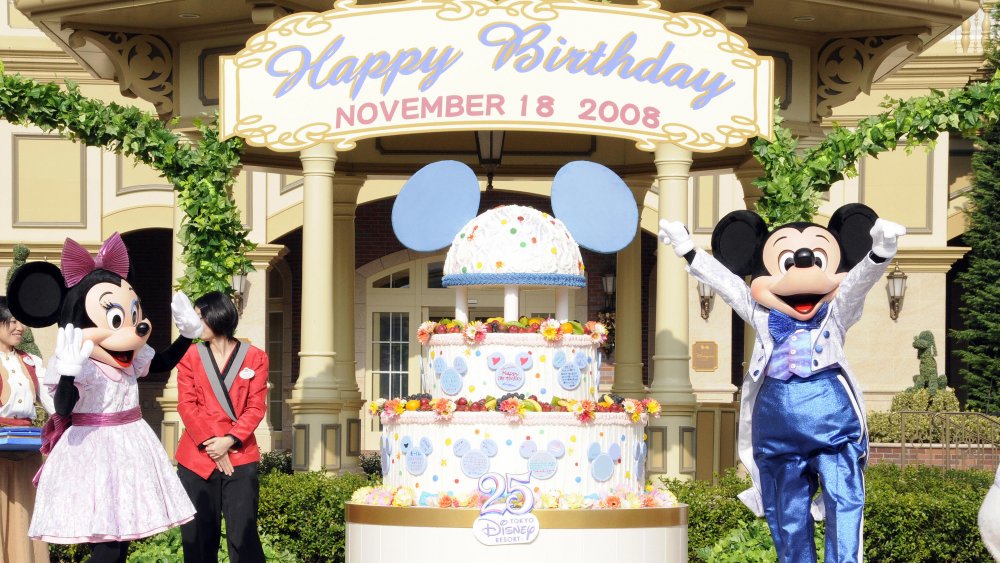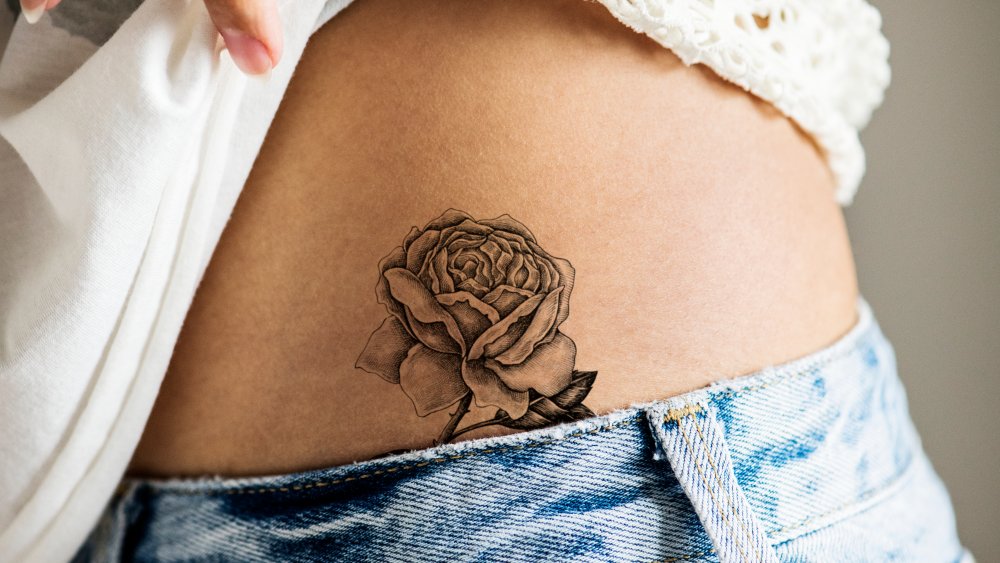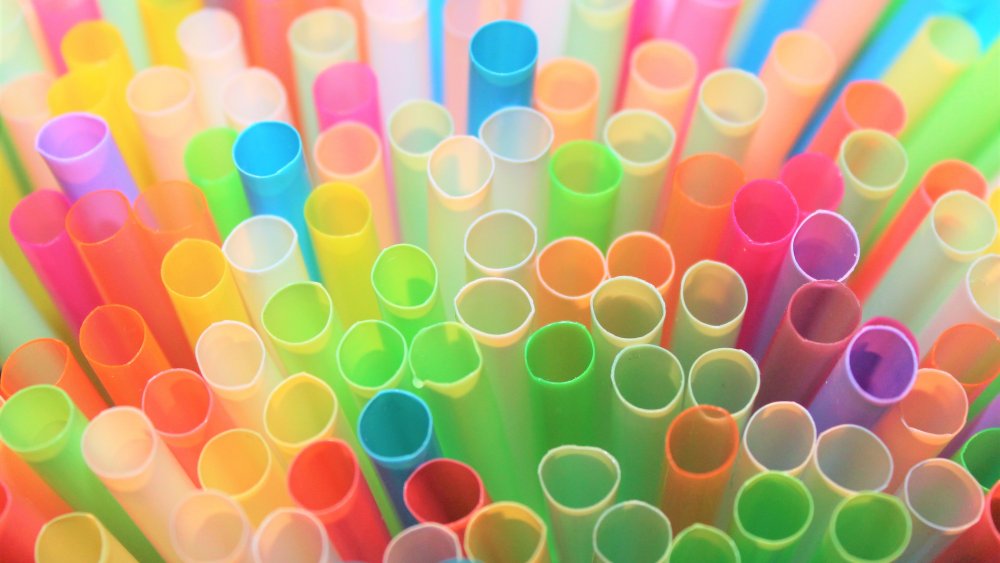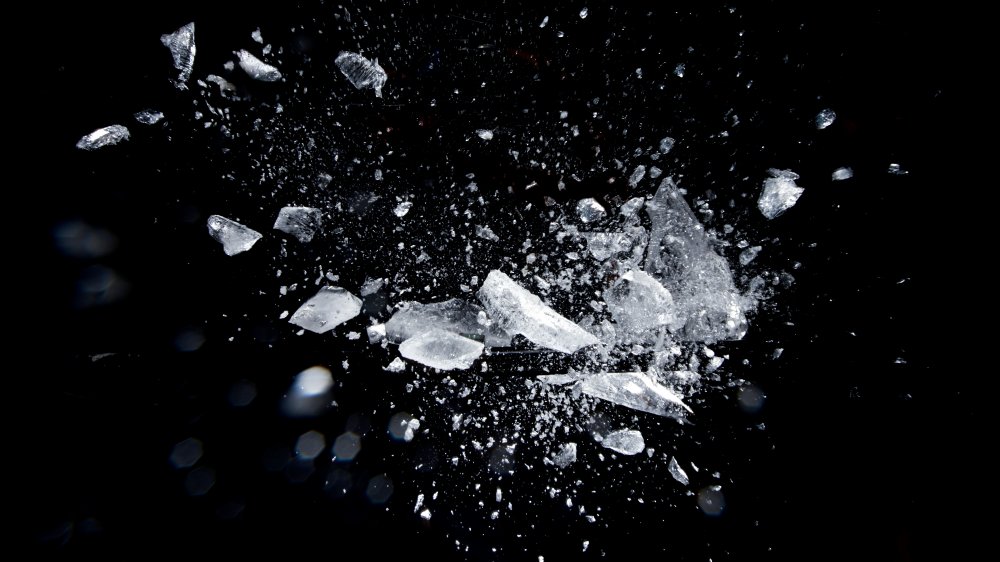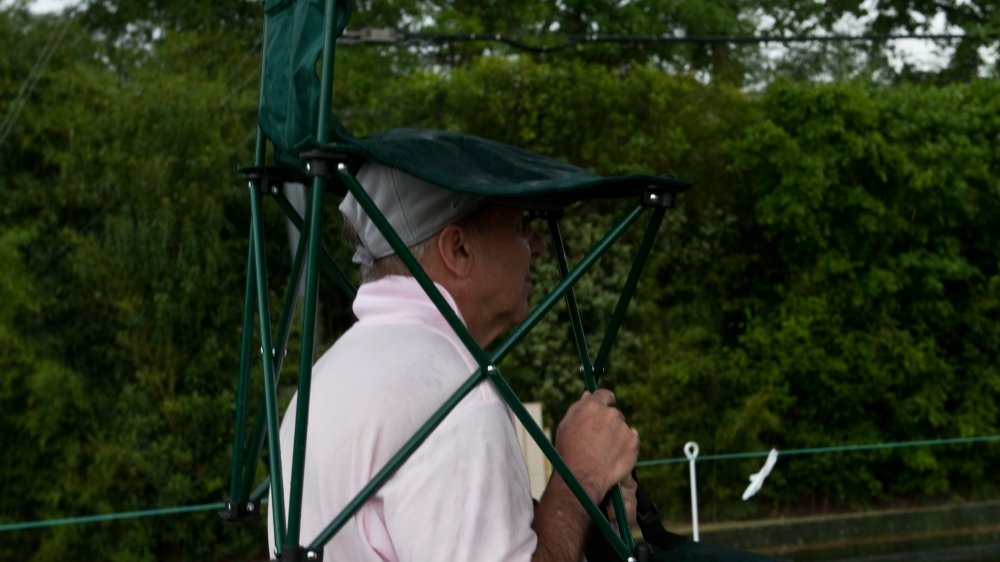Unexpected Things You Can't Bring To Disneyland And Disney World
Since 1955, the Walt Disney Company has been entertaining families from around the world. The company has done its level best to keep guests safe and happy, but let's face it: Disney has dozens of theme parks and resorts worldwide, and the company is responsible for the safety and comfort of every guest passing through its magic gates. That's why certain items are not allowed on Disney properties. It's true, line cutting, smoking, filming rides, impersonating a Disney character and other violations can get you kicked out of the park—but there are bigger repercussions for those who try to sneak in obvious no-no's like alcohol or firearms. Just the guy who "forgot" about the handgun in his backpack at Florida's Disney World in December 2019. Jail is definitely not the happiest place on earth.
For any hooligans thinking of bringing something unacceptable into the Magic Kingdom, bad deeds do not go unpunished. Anaheim, California's Disneyland even has a "jail" where "disruptive guests" are held until police arrive. So if you plan on behaving yourself, be sure to check all of the reliable lists you can find. Better safe than sorry; it makes a lot more sense to know before you go, lest you have to trash a forbidden item or take it back to your car. Some of the following items might even seem a bit weird, but hey it's Disney's house, Disney's rules.
The stuff you don't think about
It's no secret that marijuana has been prohibited at Disney parks for decades. Just ask actor Robert Downey Jr., who once got busted for getting high on a gondola ride. "The very first time I went to Disneyland, I was transported to another place—within moments of being arrested," he told his audience in 2019. Ironically, Downey was accepting the coveted Disney Award when he told the story. And the pastime remains quite popular to the extent that the Disneyland Stoner's Guide provides a handy list of places to chill at various Disney parks while waiting out your high. But what about edibles and CBD products?
Marijuana-derived products have become huge over the last several years, to the extent that it's sometimes difficult to discern what will get you buzzed and what will not. Don't ask a Disney World employee (called a "cast member") the difference either; in 2019 somebody's great-grandmother was arrested at the bag check for having CBD oil recommended by her doctor. Biz Pac Review reports that 69-year-old Hester Jordan Burkhalter was charged with a felony for possessing the oil, which she used for arthritis pain. The trouble, according to Fox News, was that even though CBD oil was sold in stores across Florida, it remained "technically" illegal in the state without a prescription. And, as WDW New Today explained, CBD typically contains only small amounts of THC, the stuff that gets you high. The charge against Burkhalter was eventually dropped.
No BYOB (Balloons, that is)
Disney parks have been selling balloons since 1955, but you can't bring one in, especially to Animal Kingdom where they could frighten the animals. The rules seen to have been looser at one point: As Disney Parks Mom's Panel explained in 2017, "outside balloons can be brought in as long as they don't have any logos or characters printed on them." There is a good chance that competition is at least part of the reason why balloons cannot be brought into certain parks owned by Disney. In 2019, however, the site added that "bringing in your own foil or latex balloons is not something that is allowed at this time." So, if you're planning a birthday or other special occasion, it's probably best to check ahead to see what the rule of the day is.
Although a floating Mickey Mouse head, magically ensconced inside another balloon, will set you back around $17.00 (cash only at most vendors), doing so does save a bit of trouble. This Crazy Adventure Called Life advises that balloons keep kids entertained and can help you find your stroller or party. Also they will be replaced for free if they deflate or suffer damage while inside the park. Still, there are environmental concerns no matter whose balloon it is: Touring Plans pointed out in 2019 that any plastic or mylar is dangerous to the environment, and that losing a renegade balloon poses a danger to wildlife. And, you can't take them on rides.
Disney has an age check for costumes
Every child fantasizes about being their favorite Disney character while actually visiting a Disney park. But adults beware: Disney rules strictly forbid anyone age 14 or older from replicating any other Disney character. They seem pretty strict about that, too. In 2012, 15-year-old April Spielman was denied entry to Disney World for wearing a Tinker Bell costume, including hair, makeup, and wings. It didn't seem to matter that Spielman had actually made her costume from scratch, which anyone looking closely enough could surely see. "It ruined my dream, because I just wanted to be Tinker Bell," a tearful Spielman told Hollywood Reporter. At least the park bought the teen and her friend non-costume clothing to wear into the park, explaining later that their dress up outfits "were disruptive to our operation and possibly confusing to our other guests, as children were asking to take photos with them."
In the years since, Disney has pretty much refused to relax their policy. iHeart Radio suggests something called "Disney Bounding," where you dress up like your character of choice without wearing the exact same costume. And now, according to Disney World, Character Couture will make your face and hair up like anyone from Cinderella to Snow White. Still, the park's statement that "Character Couture can enhance your already fabulous wardrobe with hair and make-up, making you look and feel picture-perfect" is rather misleading. It's just kind of hard to picture Snow White wearing stretch pants and a t-shirt.
Pepper spray and mace don't have that happy Disney feel
If you normally carry self-defense items, be sure to take that pepper spray out of your purse before entering the gates to the Magic Kingdom. Disney rules clearly state that such self-defense items are not allowed on Disney properties. But even Disney can't prevent crime all the time, which is probably why Disney World installed metal detectors back in 2015, according to the Orlando Sentinel. In lieu of protection, USA Carry writer Michael Jenkins recommends staying aware of your surroundings, make getting away from an attacker your biggest priority, and using items on hand such as "broom handles, glass bottles, a roll of coins, or a cup of hot coffee" to fend off bad guys.
The shoe is pretty much on the other foot for Disney security guards, who are allowed to carry pepper spray. "You have the right and the responsibility to protect our Company from conduct that can threaten our day-to-day operations, our reputation, and our future growth," reads Disney's Standards of Business Conduct handbook. The reasoning is sound enough; in 2012, the Daily Mail reported on a man being pepper sprayed by employees after cussing and throwing punches at Disney California Adventure's Tower of Terror. More recently, the New York Post wrote of a woman at Disney's Hollywood Studios in Florida cut in line for the Tower of Terror, was denied, threw a fit, got obnoxious, and punched the ride operator. What is it with the Tower of Terror?
No drones at Disney
This all started with the company's 1998 effort to limit flyovers to keep the residents of Animal Kingdom from getting spooked, according to Reader's Digest (via MSN). The idea turned out to be a good one for Disney, which requested the FAA to ask that planes stay at least 2,000 feet above and two miles from the parks to cut down on noise but also to prevent in-air advertisers from flying overhead. Then in 2003, due to 9/11, no-fly zones over Disneyland and Disney World became permanent for safety reasons. The FAA rules were expanded to staying three miles from and 3,000 feet above the parks. That included drones.
Fast-forward to 2014, when Disney figured out that drones would be great for filming their nightly fireworks shows. According to Engadget, in 2014 Disney went back to the FAA, saying they now wanted to use drones "to carry screens or light pyrotechnics themselves." The company explained that it wanted to fly drones during the fireworks show, "with several employees monitoring dozens of autonomous drones." After working for two years, Disney's request was approved on a trial basis only: The deal would remain in place until November 2020 at which time the request would be revisited. Meanwhile, as of 2014 drones fall under the recreational devices visitors cannot bring into Disney parks. The rule applies to Disneyland Paris as well, where a guest was recently arrested for flying a drone over the park, according to WDW News Today.
Selfie sticks are forbidden too
So you can't fly a drone, but still want to capture yourself having a blast at Disney? You can, but not by using a selfie stick. Before 2015, selfie sticks were permissible at Disney parks, although visitors could not take them on the rides. But there's always that one guy who, according to Time, was finally caught using a selfie stick on a roller coaster. Because of him, selfie sticks were forbidden in Disney's U.S. parks as of June 26, 2015. Three days later, Disney Paris and Hong Kong followed suit, reported the BBC, which added that "there are fears that they could cause injury if somebody was accidentally struck with one during a photo opportunity."
Within a year, some naughty guest couldn't resist disobeying the new rule. In 2016 KTLA reported that Disney California Adventure's California Screamin' roller coaster was shut down after a rider was seen using a selfie stick. The coaster remained closed for over an hour as everyone was made to evacuate. It surely wasn't the last time somebody would try sneaking their stick on a ride. The Cheat Sheet advises that "while using a selfie stick at Disneyland probably won't get you banned for life, it could still get you kicked out of the park." Employees are required to take the sticks away and keep them up front, where guests can retrieve them at the end of the visit. Those who resist will be escorted from the park by security.
Keep the wrapped gifts at home
It's been a standard rule at Disney parks for many years: no wrapped gifts are allowed inside. Mouse Planet reports that as of 2016, even Downtown Disney in Anaheim checks everybody for wrapped items, even they are not planning to visit the theme park. They won't even allow an employee (in this case dressed as a character) to bring the birthday boy or girl a gift if it is wrapped. One person on DISboards theorized that the reason was "because another child might see and not understand why Cinderella gave your child a gift but not them." But that's not it.
The plain and simple reason Disney does not allow wrapped gifts is because security has no idea what might be in the packages. Disney Fanatic confirms employees must search every purse, every bag, every backpack, and anything else that may be concealing a prohibited item. And if you do bring a gift, no matter how cute or fancy it appears, it "will be promptly unwrapped before you are granted admittance." Don't count on having the item gift wrapped on Disney property either, whether or not it was purchased onsite. Another DISboards writer advises that gift wrapping of any sort is unavailable in the parks, although some have suggested bringing wrapping paper separately and wrapping the gift while there. Safer yet, just get creative and bring the gift in an open container such as a beach bucket or gift bag.
Only family-friendly tattoos allowed
In 2016, Inked magazine caused a pretty major uproar by announcing that Disney parks prohibited any guests showing tattoos. Violators would be asked to "buy a Disney sweatshirt or scarf to cover their tattoos up before entering our theme parks." Included was a rumor that Disney's CEO, Bob Iger, hated it that tattoo artists were making money applying Disney logos without the company getting a share. What Inked didn't say was its April 1 article was just an April Fool's joke. There was absolutely no truth to article, according to Snopes, but the piece was presented in such a serious tone that many took it to be the real deal. "I used to bring my family to Disney every year!" a fake fan ranted in the article. "Now we will never go there again!!!! #knottsberryfarm4lyfe."
In truth, only offensive tattoos are forbidden according to the rules, which state, "Visible tattoos that could be considered inappropriate, such as those containing objectionable language or design, are not permitted." After all, Disney parks are family parks, so cover up anything you know security is likely to object to. Notably, the no-tat rule does apply to employees who must present a wholesome, family-friendly image at all times when on the clock. World of Walt explains, "Tattoos are not allowed... unless they can be covered completely and discretely at all times when on stage." The same goes for body piercings like "earlobe expansion or tongue splitting or piercing."
How does Minnie sip her soda?
In an effort to reduce plastic pollution, the state of California banned plastic straws as of January 1, 2018 according to CNN. Governor Jerry Brown stated the fact that plastic is responsible for the deaths of thousands of marine animals each year. The new law decreed that customers could still have a straw at restaurants if they asked for one, and the law did not apply to fast food chains. Disneyland followed suit, but Forbes reported in 2019 that Disney decided to take larger steps by eliminating "single-use plastic straws and drink stirrers" at all Disney owned locations by mid-year. Doing so would reduce the items by 175 million straws and 13 million stirrers each year.
According to Chip and Co., the new ban soon included plastic lids as Disney produced paper straws bearing the words "Earth Day" on them. Plastic reusable straws were offered at certain parks, but Disney rules explicitly state that bringing one-time use straws in by visitors is strictly forbidden. What to do? Shortly after the new rule went into effect, Disney Parks Mom's Panel recommended bringing reuseable straws, including the silicone or aluminum variety. In fact, Disney encourages guests to bring their own—although it was noted that they should check with security about aluminum straws, lest the items be construed as a danger to others. The post also boasts Disney reduced its net greenhouse emissions by 41 percent beginning in 2017, long before the straw ban.
No dry ice or ice cubes allowed
According to Disney World's list of rules, bringing "loose or dry ice" in your cooler to keep your goods cold is a no-no. Dry ice has the capacity to explode as it turns out, although nobody seems to have realized that until 2013 when Disney employee Christian Barnes secreted two water bottles full of the stuff in his vending cart at Disneyland in California. According to CNN, Barnes was getting off work when one of the bottles exploded inside the cart. The man then deposited the second bottle in a trash can, which also exploded when a custodian removed the trash bag from inside the can. Toontown, where the incident occurred, was evacuated for about two hours as a result, although the rest of Disneyland remained open.
Barnes was found guilty of "possession of a destructive device" and sentenced to 36 days in jail, plus probation and community service, reported NBC. But for some reason, Disney didn't officially enact the rule forbidding dry ice until 2019. When they did, however, they threw in ice cubes too for good measure. Don't worry, coolers are still allowed, and Reader's Digest says visitors can bring reusable ice packs to keep them cold. You can even get a free cup of ice at "quick-service" restaurants in the park. Upgraded Points makes a rather pointless suggestion of simply putting frozen water bottles in the cooler instead. Because those can't be dangerous in any way, can they?
A chair is a chair—not
Are you thinking of bringing a folding chair so you have a way to sit while you wait in line for a ride or a show? Think again. Folding chairs are prohibited within Disney parks. Still, according to Disney Park Mom's Panel, rollators (a walker with wheels and a seat) and cane chairs (a cane with a seat) are acceptable because they accommodate those with a disability, although there appears to be "no hard yes or no" on the issue. The simplest way to make sure your visit runs smoothly may be to rent a wheelchair or "electric conveyance vehicle" (read: scooter) from the Disney park you are visiting. Undercover Tourist advises that these items cannot be reserved in advance, however, and are rented on a first-come-first-serve basis.
Also, rider beware: Once you go through finding an comfortable or acceptable way to sit or get around, you are no longer eligible for Disney's Disability Access Service Card. The guidelines specifically state that the DAS Card "is designed to accommodate guests who aren't able to wait in a conventional queue environment." A chair of any sort means you can wait, so figure it out before you go. Giving the rules a thorough read-through really is the best way to ensure a great day in the Magic Kingdom. Just remember this bit of advice from Tip Hero: security at Disney has the right to "confiscate any other items that [they] determine may be harmful or disruptive."
